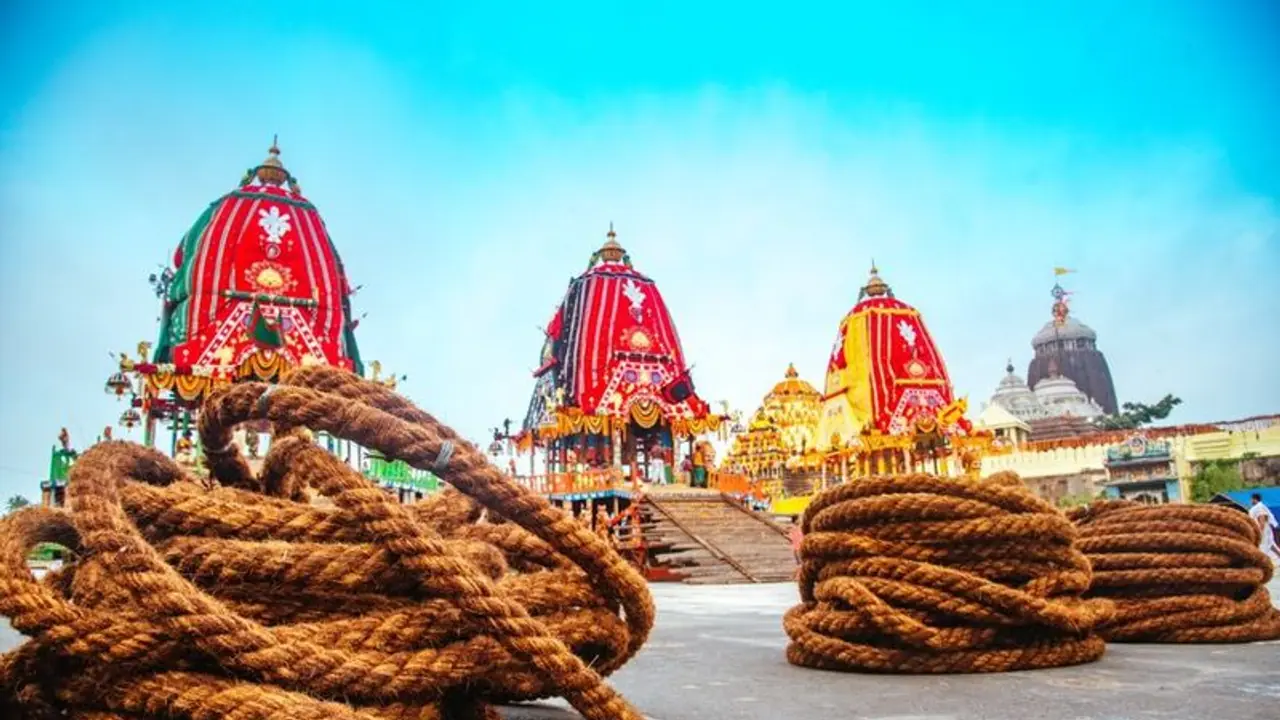But do you know that every year, a group of craftsmen -- with no manuals, architectural drawings to refer to or modern machines to use -- make gigantic and identical chariots for the three deities in Puri?
Bishwakarma (the chariot makers), painters and tailors are giving the final touch to the three gigantic chariots of Lord Jagannath, Lord Balabhadra and Devi Subhadra parked in front of the 12th century 'Sri Mandir before the annual Ratha Jatra on July 1.

But do you know that every year, the group of craftsmen -- with no manuals, architectural drawings to refer to or modern machines to use -- make gigantic and identical chariots for the three deities in Puri?
Also Read: India@75: Story of VOC Pillai, the patriot who 'steered the ship'
Using only traditional knowledge, these craftsmen toil away every year to ensure that the three chariots are ready for the day of the yatra that begins in front of the Jagannath Temple and goes on till the Gundicha Temple.
Asit Mohanty, a researcher in the Jagannath culture, told news agency PTI some days ago that the chariots are constructed afresh every year. There is no deviation in their widths or heights and other key parameters for centuries. However, new features are added to the chariots to make them more attractive.
The carpenters who work on these chariots do not have any formal training. They rely on the knowledge and techniques that have been handed down the generations.
Over 4,000 pieces of wood are used to construct the chariots. Only a handful of families have hereditary rights to work on the chariots.
Bijay Mohapatra, the chief 'Biswakarma' (carpenter) of Lord Jagannath's 'Nandighosh' chariot that has 16 wheels, said that he had been making the chariots for about four decades. He was trained by his father, Lingaraj Mohapatra who received his training from his father Ananta Mohapatra.
We are privileged to get the opportunity to serve the Lord, he said, adding that only traditional equipment are used in the construction of the chariots.
The craftsmen measure in the units of 'haat' (hand size) and 'angulis' (finger size). When asked about how the 'haat' size is uniformly calculated when the hand lengths of carpenters vary, Mohapatra said: "I was given a stick by my father, which is considered as one 'haat' (20 inches). One 'haat' is 25 'angulis'. That is how we calibrate the height and width of the chariots."
The construction work on the chariots begins on the day of Akshaya Tritiya and takes as many as 150 traditional craftsmen around 57 days to complete. The carpenters' children assist in making the chariots of Lord Jagannath, Devi Subhadra and Lord Balabhadra. This ensures that the traditional knowledge is passed on to the future generation.
Though our children live outside Puri for a living, all of them come for two months and help their fathers in chariot making, Mohanty said.
Besides carpenters, there are artisans and blacksmiths too who have been involved in this process for generations.
While the 'Bishwakarmas' look after the chariot construction of chariots, the 'Pahi Maharanas' fix the wheels of the chariots, 'Ojha Maharanas' (blacksmiths) prepare nails, pins, clamps, and iron rings. Tailors prepare the cloth that is used as covers, canopies and flags.
Researcher Bhaskar Mishra informed that Lord Jagannath's chariot is constructed with 832 pieces of wood while Lord Balabhdra's chariot, 'Tajadwaja', has 14 wheels. Lord Balabhdra's chariot is draped in red and green cloths. Devi Subhadra's chariot, 'Darpadalan' has 12 wheels and is covered with red and black cloth.
The Odisha government's works department gives fitness certificates to the chariots before they are pulled during the festival. A team of engineers is kept ready for any repair work en route. The chariots are dismantled after the festival is over. Major portions of the dismantled chariots are auctioned. The rest of the woodwork goes to the temple kitchen.
With PTI Inputs
India@75: Evolutionary history of the Indian tricolour flag
India@75: Bankim Chandra Chattopadhyay, the man whose works awoke a nation
India@75: Meera Behn, Mahatma's confidante who took India's freedom struggle abroad
